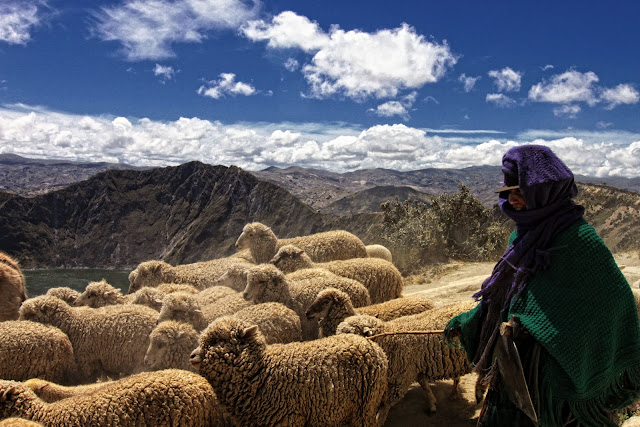Before I even knew I wanted to work in the tourism industry, Sarah and I were planning this round-the-world journey. It just so happens that over these past 5 years, I have immersed myself in the world of eco and sustainable tourism as a career, and conveniently, our big trip is now doubling as a professional development endeavor (can I write this trip off?!?). Don’t worry, I’m not working too hard.
 Among a few different hats that I’m wearing on the road (representative of STI, trip research for AWR, etc), I am contributing bi-monthly to the Responsible Travel Blog of World Nomads, a travel information and insurance provider.
Among a few different hats that I’m wearing on the road (representative of STI, trip research for AWR, etc), I am contributing bi-monthly to the Responsible Travel Blog of World Nomads, a travel information and insurance provider.
You can find my first contribution, Trashing Ecuador, at this link, or copied below.
Dealing with waste (trash, recycling, composting) is one of the biggest issues that cities and destinations have to deal with in their pursuit of sustainable tourism. Generally speaking, it’s rare to find recycling and composting infrastructure outside of the western world. Imagine my surprise when I saw this image (Otavalo Waste Sorting Photo) walking down the streets of Otavalo, the famous market town north of Quito. Otavalo has composting?!?! Boulder, Colorado – the hyper-enviro-conscious- hippie-haven doesn’t even have city composting pick up – how can these Ecuadorians have a more progressive program than my home town? Well, they do, and it’s not just the businesses. Across town, there are separate garbage cans are labeled “Organico” and “Inorganico”, and city workers follow this dump truck help to sort any misplaced trash.
I mentioned my enthusiasm for the program to a friend who lives in the neighboring community of Cotacachi, and he quickly corrected my misconceptions. “Oh, all that organic waste just goes to the landfill. They separate it, but it gets re-mixed at the dump site.” Really?!? Why go through the trouble (and costs) of separating organic waste if it’s just going to end up in the same place? Apparently, Otavalo used to compost their organic waste. But that was under the old Mayor. The new Mayor doesn’t see the need to pay for a composting program, and so he discontinued it. The sorting infrastructure was kept in place to continue to educate the public, because at some point down the road, they might start composting again (when funds become available).
While the cities are pulling a fast one by their citizens and visitors, there are some inspiring examples of waste management in the Ecuadorian tourism industry. I just finished a short stint at the Black Sheep Inn, an eco-focused accommodation in the Quilotoa region. BSI is famous for their toilets…seriously. There hasn’t been a toilet flushed on the property since they opened their doors in 1996 – they are all composting toilets. It helps that the views from these waterless waste disposals overlooks gorgeous Andean mountains and valleys (View from the toilet). But that’s just the start of their waste management strategy.
BSI is nearly a zero-waste operation – everything consumed on the property is either recycled or reused. Guests are asked to separate their trash into plastics, metals, and paper. All food waste is either fed to the on-site animals (of course there are some black sheep) or composted for the gardens that grow food for the restaurant. Glass bottles are re-used for artwork. Grey (dirty) water is used for irrigation. BSI, in their efforts to benefit the local residents, also funded and built a community recycling center, as well as a recycling pick-up. Andres, co-owner of BSI, is known to the locals as “The King of Trash”.
Otavalo and the Black Sheep Inn have one thing in common when it comes to trash – they are both trying to educate people about the importance of proper waste management. As a responsible traveler, you have the obligation to the destinations you visit to properly deal with the trash you produce. Think about what resources you use during your travels, what you can do to minimize them, and how to properly dispose of the trash you create. Avoid excess water bottles when traveling (bring your own refillable bottle!). When you do drink out of glass or plastic, try to find recycling options, even if that means packing the empty bottle in your pack for the afternoon. Refuse unnecessary plastic bags. Seek out accommodations like BSI who are dealing with your waste responsibly. You get the idea – the less trash you create, the more the destination benefits.
Written by Ted Martens
- – - – - -
Ted’s journey into the travel and tourism industry started the summer after a two-month backpacking trip throughout Europe ignited a life-long passion for international travel. With a master’s degree in Tourism Development, Ted has focused his efforts on helping non-profit Sustainable Travel International promote responsible tourism across the globe as their Director of Outreach & Development. After working too hard for the past 5 years, he is on the road again, escaping the office for some field research… is the responsible travel movement taking seed across the globe, or not?
